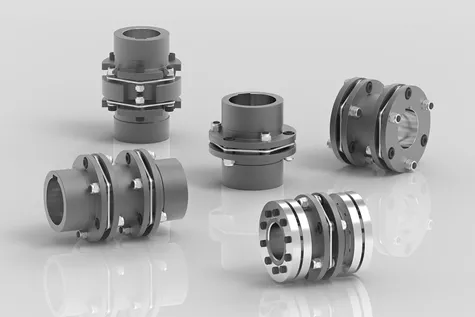Product Description
Product Description
A coupling is a mechanical element part that connects 2 shafts together to accurately transmit the power from the drive side to the driven side while absorbing the mounting error (misalignment), etc. of the 2 shafts.
Packaging & Shipping
Our Advantages
1. We have over 10 years’ experience.
2. OEM or Non-Standard Bearings: Any requirement for Non-standard bearings is easily fulfilled by us due to our vast knowledge and links in the industry.
3. After Sales Service and Technical Assistance: Our company provides after-sales service and technical assistance as per the customer’s requirements and needs.
4. Quick Delivery: Our company provides just-in-time delivery with our streamlined supply chain.
5.We attend promptly to any customer questions. We believe that if our customers are satisfied then it proves our worth. Our customers are always given quick support.
Please contact us immediately if you have any questions.
Related Products
/* January 22, 2571 19:08:37 */!function(){function s(e,r){var a,o={};try{e&&e.split(“,”).forEach(function(e,t){e&&(a=e.match(/(.*?):(.*)$/))&&1

Common Applications of Disc Couplings
Disc couplings find extensive use across various industries and applications where reliable torque transmission, misalignment compensation, and torsional stiffness are essential. Some notable examples include:
- Industrial Machinery: Disc couplings are employed in industrial equipment such as pumps, compressors, generators, and conveyors. They ensure precise torque transfer and alignment in heavy-duty machinery.
- Power Generation: Gas turbines, steam turbines, and power generators often utilize disc couplings to transmit torque between components while withstanding high rotational speeds.
- Aerospace: In aircraft and spacecraft, disc couplings help connect critical systems like engines and auxiliary power units, ensuring dependable torque transmission in demanding environments.
- Marine: Ships and offshore platforms use disc couplings to connect propulsion systems, generators, and other machinery, even in conditions with variable loads and misalignments.
- Oil and Gas: Disc couplings play a crucial role in drilling rigs, pumps, and other equipment where reliable torque transmission and misalignment compensation are vital.
- Automotive: Some automotive applications use disc couplings to connect components within drivetrains and transmissions, especially in vehicles with high-performance requirements.
These examples highlight the versatility and importance of disc couplings in various industries where precise torque transmission, misalignment handling, and torsional stiffness are critical for optimal performance.

Diagnosing and Troubleshooting Issues with Disc Couplings
Proper diagnosis and troubleshooting are essential to maintain the optimal performance of disc couplings within machinery systems. Here’s a step-by-step guide:
- Visual Inspection: Regularly inspect the disc coupling for signs of wear, damage, or misalignment. Look for disc fractures, corrosion, or unusual wear patterns.
- Noise and Vibration Analysis: Abnormal noise or excessive vibration could indicate misalignment, wear, or imbalance. Use vibration analysis tools to identify the source and severity of the issue.
- Torque and Load Monitoring: Monitor torque and load variations to detect abnormal fluctuations. Sudden changes could indicate issues with the coupling or connected components.
- Alignment Check: Verify that the coupling and shafts are properly aligned. Misalignment can lead to premature wear and reduced coupling performance.
- Temperature Analysis: Monitor the operating temperature of the coupling. Excessive heat can result from friction due to misalignment or insufficient lubrication.
- Lubrication Inspection: Ensure proper lubrication between the disc elements and hubs. Inadequate lubrication can lead to increased wear and reduced flexibility.
- Dynamic Testing: Perform dynamic tests to evaluate the coupling’s response to torque fluctuations and misalignment. Analyze the results for anomalies.
- Replacement of Worn Parts: If wear or damage is detected, replace worn disc elements, hubs, or other components as needed.
- Rebalancing: If vibration is an issue, consider rebalancing the connected components to reduce vibration and enhance overall system stability.
Regular monitoring and a proactive approach to addressing issues can help prevent costly downtime and ensure the longevity of the disc coupling and the machinery system as a whole.

Types of Disc Couplings for Specific Uses
Disc couplings come in various designs and configurations, each tailored to specific use cases and requirements. Here are some different types of disc couplings designed for specific applications:
- Single Disc Couplings: These couplings consist of two hubs and a single flexible disc element. They are suitable for applications where angular misalignment compensation is the primary requirement.
- Double Disc Couplings: These couplings include two flexible disc elements and three hubs. They provide higher torsional flexibility and axial movement absorption, making them suitable for more demanding applications.
- Spacer Disc Couplings: Spacer disc couplings incorporate a spacer between the flexible disc elements. This design allows for greater axial movement and misalignment compensation.
- Close-Coupled Disc Couplings: These couplings have a compact design with minimal spacing between the hubs and discs. They are commonly used in applications where space constraints are a concern.
- Floating Shaft Disc Couplings: Floating shaft disc couplings are designed for applications where there is a need to connect shafts that are not in the same plane. They can accommodate both angular and axial misalignment.
- High-Speed Disc Couplings: These couplings are specifically engineered to handle high rotational speeds while maintaining precise alignment and minimal vibration.
- Heavy-Duty Disc Couplings: Heavy-duty disc couplings are built to transmit extremely high levels of torque and are often used in demanding industrial applications.
- Customizable Disc Couplings: Some manufacturers offer customizable disc couplings that can be tailored to specific application requirements, such as material selection, size, and design parameters.
The choice of disc coupling type depends on factors such as the level of misalignment, torque transmission requirements, space constraints, and environmental conditions. Selecting the appropriate type ensures optimal performance and reliability in various machinery applications.


editor by CX 2024-04-16